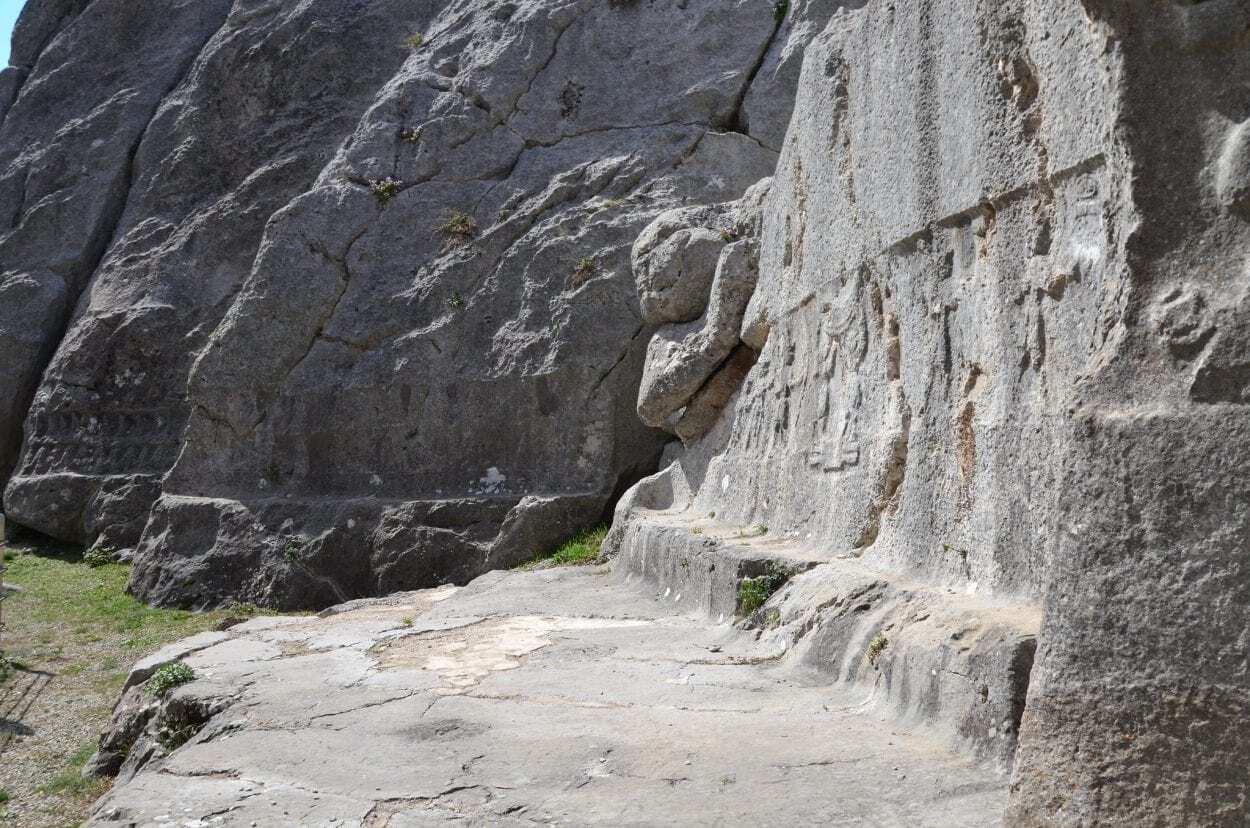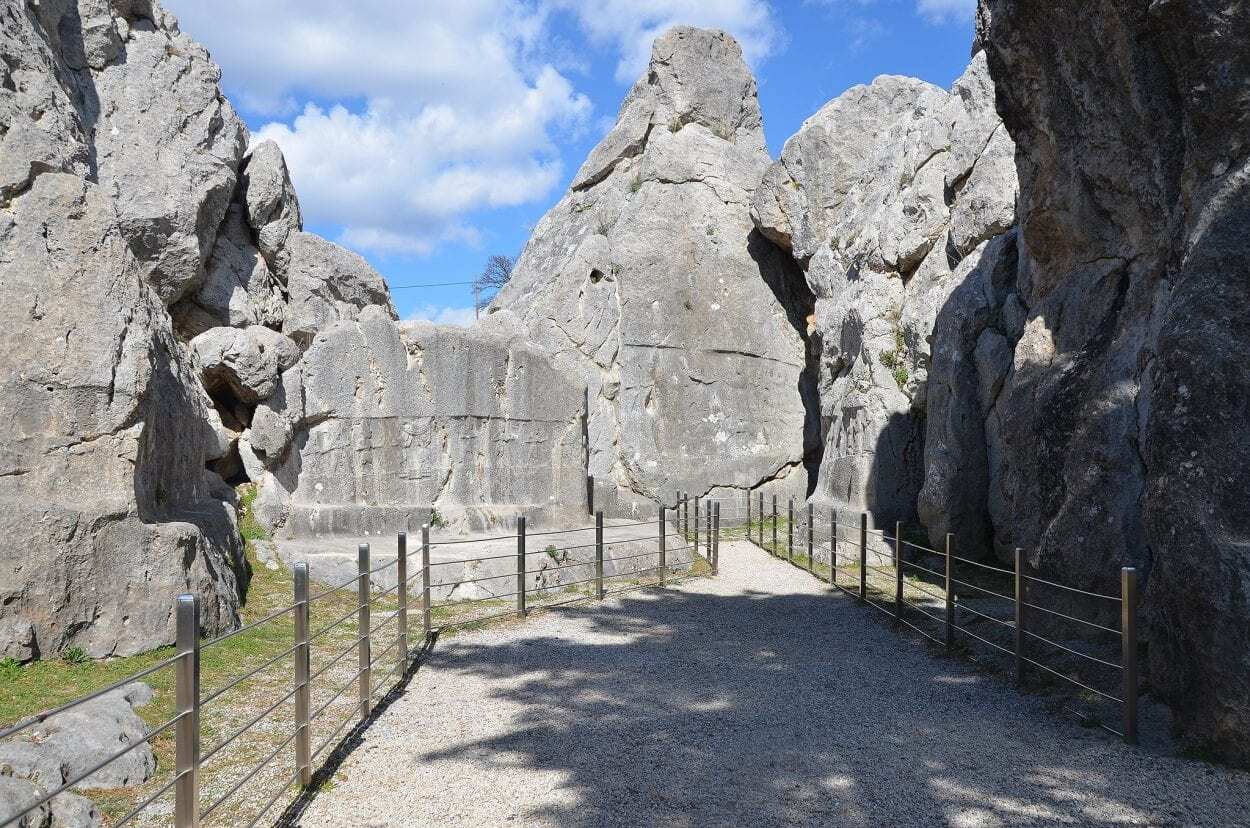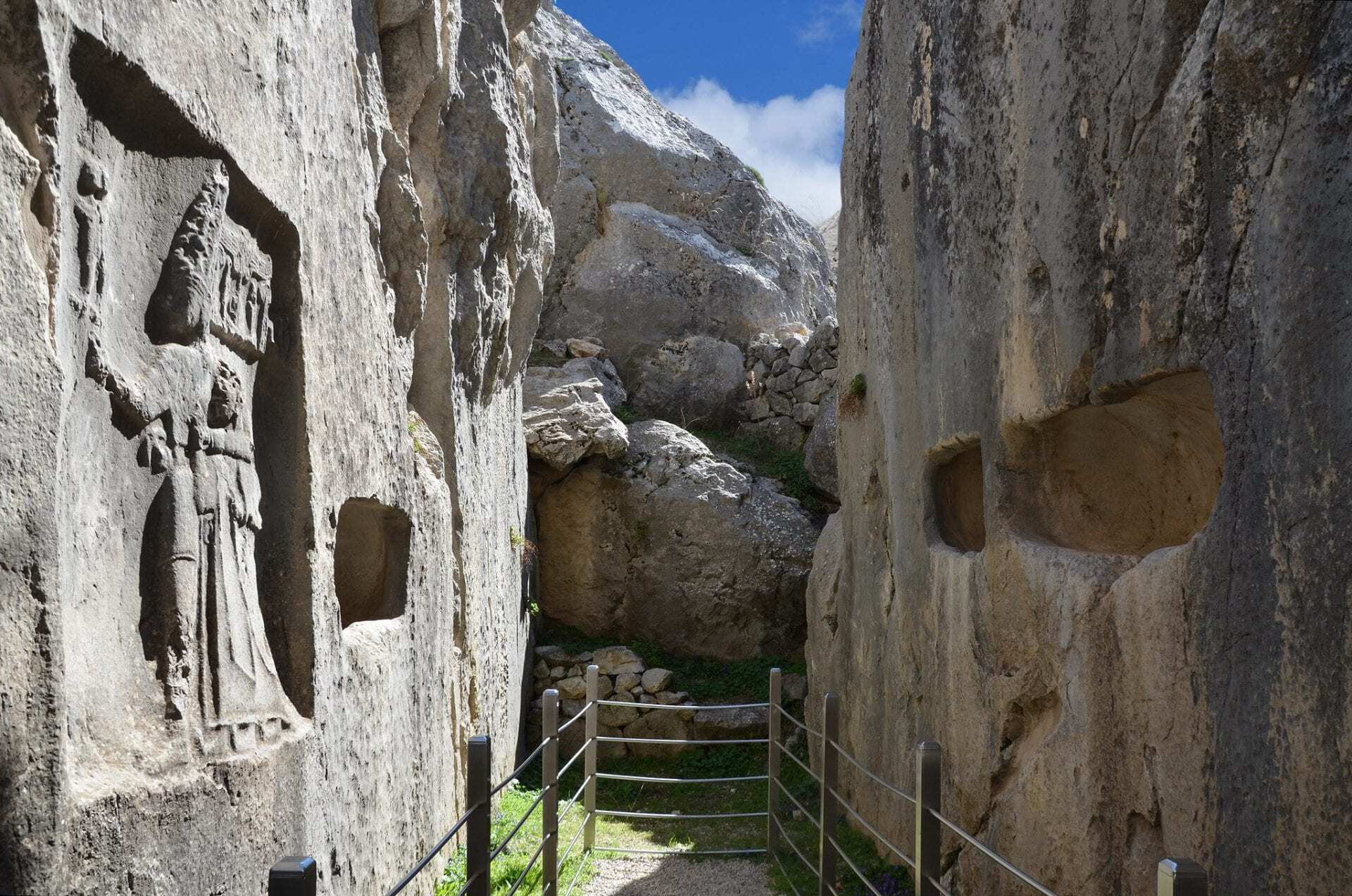Yazılıkaya is an ancient sanctuary that served the Hittite capital of Hattusa, located in modern-day Boğazkale, Turkey.
The Hittites were an Ancient Anatolian people, ruling an empire that reached its peak around the mid-14th century BC.
The region (known as the “land of Hatti”) was first inhabited by the Hattians, around 2000 BC and was absorbed either through conquest or gradual assimilation into a new Hittite state. Hattusa was established as the capital during the 17th century BC by King Hattusilis I, comprising of an inner and outer precinct that covered an area of 444 acres.
At its zenith, the city had a population between 40,000 to 50,000 inhabitants and consisted of a citadel, a temple district, an industrial district, the Sankale (a 60-meter high rock with a fortress on the summit), the Büyükkale (Great Fortress), and various large civic buildings.

A large sanctuary (Yazılıkaya) was constructed outside the city gates across roofless chambers formed inside a group of rock outcrops. The chambers depict various rock-cut reliefs portraying the gods of the Hittite pantheon such as the sun-goddess Hebat and the storm-god Teshub, with most of the reliefs dating from restorations by King Tudhaliya IV and king Suppiluliuma II in the late 13th century BC.
Evidence of the Hittite practice of assimilating other cultures can also be found throughout the sanctuary, with Ea (the Mesopotamian god of wisdom) and Teshub (a Hurrian god) being carved into depicted reliefs showing the gods procession.

Academics theorise that the sanctuary may have been used in the celebrations of the Hittites New Year or associated with the climate, with another theory suggesting that the sanctuary was a time-keeping device or a calendar to measure the lunar and solar movement (evident by markers under each line of gods in procession).
Hattusa and Yazılıkaya was destroyed along with the Hittite state around 1200 BC (evident by traces of burning) during the Bronze Age collapse, although archaeological evidence suggests that the city was gradually abandoned over a period of several decades, becoming completely abandoned by 800 BC.
Header Image Credit : Carole Raddato – CC BY-SA 2.0





